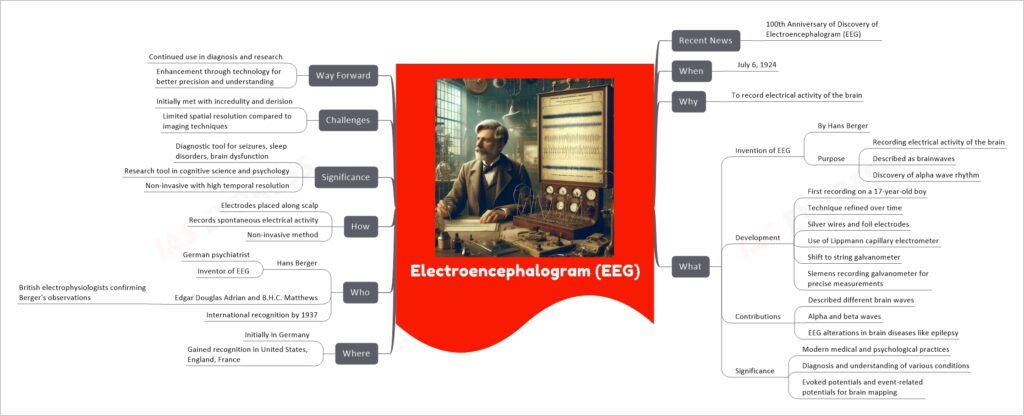Electroencephalogram (EEG)
The 100th anniversary of the discovery of the Electroencephalogram (EEG) marks a century since Hans Berger, a German psychiatrist, first recorded human brain activity using this method. EEG has since become a fundamental tool in diagnosing and understanding various neurological conditions, including epilepsy, sleep disorders, and brain dysfunctions. It operates by placing electrodes along the scalp to record the electrical activity of the brain, a technique that Berger developed and refined over time. Despite its initial reception, which was met with skepticism, EEG’s significance has been recognized worldwide, contributing immensely to both medical and psychological practices. Today, EEG is not only a diagnostic tool but also serves in cognitive science and psychological research, providing insights into brain functions and disorders.


